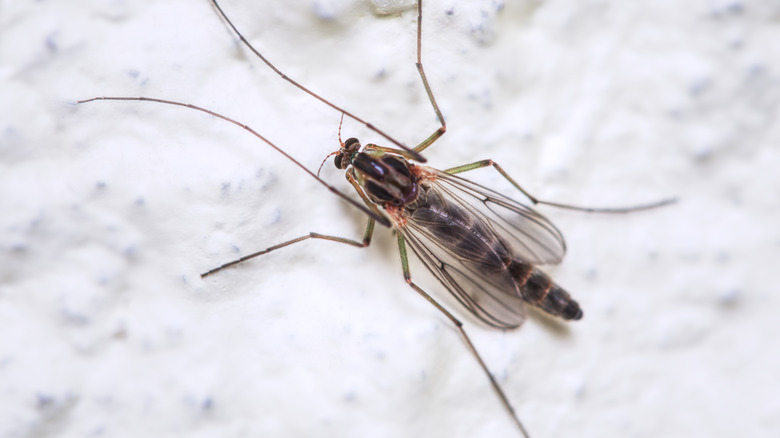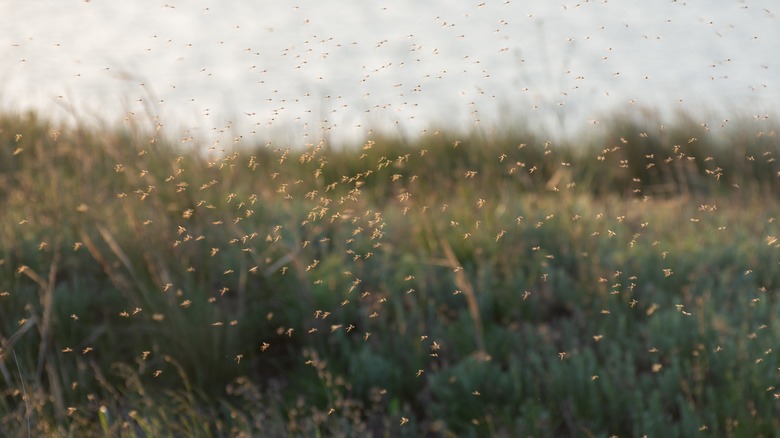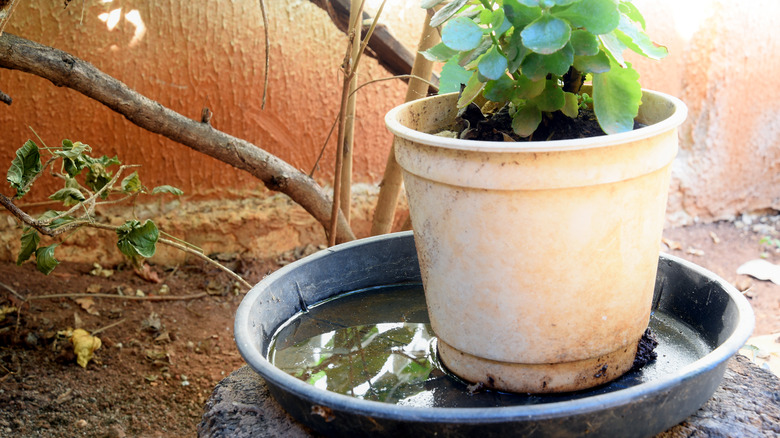What Are Midge Bugs & Why Are They Attracted To Your Yard?
You may think that those annoying bugs buzzing around your yard are mosquitos, but they could be another insect: midges. The term midge applies to several types of single-winged tiny flies, collectively referred to as "midges," with 20,000 types around the world. However, there are biting midges (no-see-ums) and harmless midges, which, true to their name, don't bite. Due to their size and appearance, you may mistake them for mosquitoes, but it pays to know the difference, as midges don't have a proboscis, the long mouth mosquitos use to suck blood. Often present by bodies of water, midges flock to the yard enticed by lighting, including outdoor lighting and bug zappers. These moisture-loving insects seek out damp conditions, so they're often present after a rainfall and thrive in humid weather.
You can also attract midges simply by being in your yard, as these bugs are drawn to humans, finding us all simply irresistible. Breath, sweat, and clothing can attract them, just like how humans can draw mosquitos. Midges are most active from spring to fall, reaching peak levels in the summer, but warmer states like Florida will find them a nuisance year-round. If you live in a midge-heavy region, you may experience a bite occasionally and wonder if it's dangerous and how to avoid a midge infestation in your yard.
Are midges dangerous?
Harmless midges are bothersome, but biting midges can feed on humans much like mosquitoes, causing skin irritation, such as burning or small welts. However, unlike mosquitos, they aren't known for transmitting diseases to humans in the United States. If you have livestock, biting midges can be a concern as they may transmit Bluetongue Virus to cows, sheep, and other animals, with the most serious cases often in sheep. The virus doesn't affect people.
Biting midges can transmit Oropouche virus, but there have been no known cases in the United States, only in South America, Central America, and the Caribbean. Oropouche fever can develop from Oropouche virus, with flu-like symptoms such as nausea, muscle aches, and vomiting. Sometimes, meningitis and encephalitis can result in the more serious cases. While the United States might not have to worry about humans transmitting Oropouche virus, it's still advised to try to minimize your chance of a midge bite, especially if you're sensitive to insect bites. Luckily, avoiding attracting midges is as easy as repelling mosquitoes – you just need to make a few small changes.
Keep to keep midges away from your yard
Even if they aren't the biting variety, midges can be annoying, especially as they swarm around your face, irritating our eyes and nose. If you see midges appearing in your yard or live in an area where they're common all year, take action to prevent them. Like mosquitos, they need standing water to breed, so your best course of action is to remove any stagnant water, dumping out planters, tires, and trash cans with any pooled water. You should also drain and clean fountains or bird baths weekly.
Repellents such citronella candles on a patio table will work with midges, and you can use other insect repellants to keep them away from your body. You can also alter your lighting to avoid midge attraction, replacing high wattage bulbs with lower wattage options and turning them so they don't shine on a light-colored wall. Consider also turning off your lights near doors, windows, and pools shortly before dusk. For a more natural midge-defense system, put in feeders or birdhouses to draw various types of birds to your yard. Sparrows, warblers, and flycatchers are among the birds who will happily dine on midges, though it's possible other mosquito-loving birds will as well.


